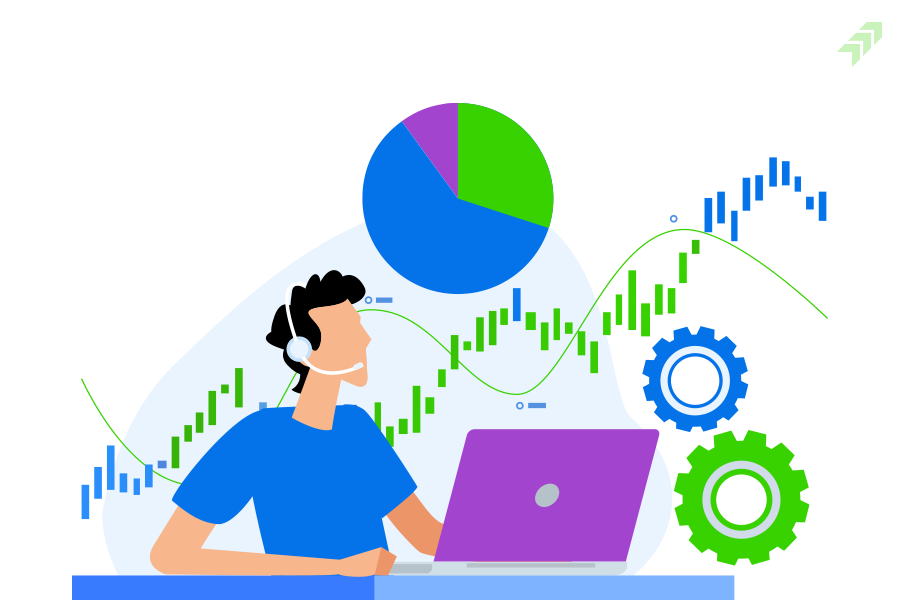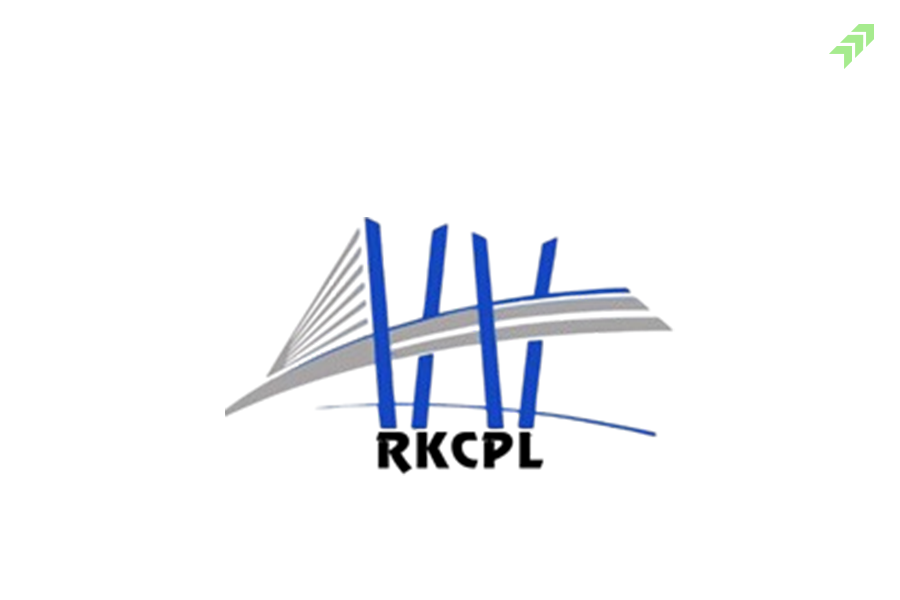The price of stocks moves up when more investors buy the stock compared to sellers. And when the price goes down, means the volume of sellers is higher than the number of buyers. And you can notice whenever a stock breakout or breakdown from its range-bound trend, then this is mainly because of an extraordinary increase in the volume of trade during the trading sessions that moves the stock from its range-bound trajectory.
Volume plays a significant role while trading in the stock market or moving the price of individual stocks. You need to understand its importance so that you can always check the volume indicator while creating any buying or selling positions in the stocks. The volume indicators give a signal of how much trade takes place compared to previous trading sessions.
Also Read: Importance of Volume in Technical Analysis: Use & Role in Trading
What is the Volume in The Stock Market?
The number of shares in the cash market and number of contracts traded in the derivatives market for a specific period, you can say a one-day trading session is called the volume of trade. When there is huge volume in any stock it is highly active and moving in a particular direction with a strong trend in the same direction for a few trading sessions.
To see the volume you can check the bar chart that is usually created at the bottom of the price chart and the height of the bar chart shows the increase and decrease in the volume of trade. There are various indicators that are used to check the level of volumes or trends in the volume. This helps investors or traders to create the right trade positions.
Also Read: What to Know Before Investing in Stocks: 10 Things to Consider
For long-term investment, you can simply check the volume through a bar chart but there is no significant role of volume in long-term movement in the stock price, as a small price increase on a regular basis for many days, can take the stock price at very high levels.
However, for intraday trading, you can identify the levels of volume in a stock of index traded. Here you can use the volume indicators that you can use for the day trading. Here today we going to discuss about the most popular and best volume indicators for day trading or intraday trading with the best settings and how to use volume for trading.
Also Read: 7 Biggest Mistakes To Avoid While Doing Intraday Trading
10 Best Volume Indicators for Day Trading
#1 Volume Price Trend Indicator
The volume price trend (VPT) indicator is one the useful volume indicators that helps to identify the direction of stock price along with the strength of the change in price. This volume indicator is similar to the on-balance volume (OBV) indicator that measures the cumulative volume and also provides information on the money flow in the stock.
The indicator entails the cumulative volume line that adds or subtracts a multiple of the change in percentage in the current volume and trend in the price of the share. These changes and calculations are based on the upward or downward movements of the stock.
How to interpret the VPT Indicator?
When you use this indicator for day trading you can check if the price and volume both increase, it confirms the trend in stock is upward. If price and volume decrease, means price trend in a downward direction.
However, when the increase in the price is supported by a flat or decrease in volume, it means the volume trend is a negative divergence. This kind of price and volume trend indicates that the downward movement in price is weak and might reverse with a change in volume.
Conversely, when the price decrease is accompanied by an increasing or muted volume indicating a positive divergence that suggests the upward movement in price is not so strong and the trend is likely to reverse in coming trading sessions.
#2 On-Balance Volume Indicator
The on-balance volume (OBV)is one the oldest and simplest volume indicators used by traders for short-term as well as intraday trading. In OBV use the flow of funds or you can volume to indicate the price fluctuations for stocks or any other assets.
Also Read: How to Do Intraday Trading: Best Stocks, Charts & Strategies
OBV is a kind of momentum indicator and you can use the changes in volume to find out the price trends for any stock. This volume indicator provides insights into investor sentiment towards the stock and you can use it for forecasting the direction of the stock.
To calculate the OBV you have to measure the buying and selling pressure as a cumulative indicator, and then add up the days and subtract the down days in a session. It can be also used for divergences when the price increases but the volume increases at a slower speed or even starts to fall. In simpler terms, OBV compares the total volume with its price.
#3 Accumulation/distribution
Developed by Marc Chaikin, the accumulation/distribution (A/D) indicator is used to identify whether a stock is being accumulated or you can say bought or being distributed or you can say sold. Traders use it for buying the stock that is accumulated and short-sell if it has been distributed.
To calculate the A/D you can add the previous A/D to the current cash flow volume. And to interpret the distribution line you can use the upward line direction as a bullish trend and consider the downward directional bearish trend for that particular stock.
While interpreting the ADL line, the trend depends only on the direction of the line. ADL can provide you with an indication of a potential trend change and it also gives insights into future price movements. And you can also use the ADL line to know the positive and negative divergences between the price and volume giving clues for upward or downward trends.
#4 Money Flow Index
The Money Flow Index or MFI is a volume indicator like the Relative Strength Index (RSI) that when applied shows a single line that has overbought and oversold levels. It is a kind of oscillator that you can use to check the buying and selling pressure on the stock.
To calculate MFI, you have to be 100 minus 100/ (1+ Money Flow Ratio). And you can also use it to find bullish and bearish divergences. The index between the ranges of 0 to 100, gives the indication of overbought or oversold signals. However, some traders also use it while following the trend and also one of the useful tools for predicting reversals.
#5 Volume-weighted Average Price
Volume-weighted average price is like the moving average indicators like an exponential, simple and weighted moving average of volume. Here volume-weighted average price indicates the average price of stock traded during the trading session but when you consider both price and volume while using the volume-weighted average price indicator.
Also Read: How to Use Moving Averages in Trading & Convergence Divergence
This indicator signals the actual price of the stock that is trading so that can signal if the stock has been bought or sold at a fair price. Here you can use this indicator to remove the noise in the market and get an idea of at what price the transaction has taken place.
However, this Volume-weighted average indicator can be used as convergence and divergence or bullish and bearish crossovers. When this Volume-weighted average indicator rises or the price crosses above the VWAP line, it indicates the prices are in an uptrend. While if the VWAP is declining or the price crosses below the VWAP line, it means prices are in a downtrend.
#6 Klinger Oscillator
The Klinger Oscillator is used by traders to predict long-term trends in money flow while showing short-term fluctuations. However, this oscillator can be also used in several ways like forecasting the trend reversal in the price of the stock.
To interpret the Klinger Oscillator, the Fluctuation below and the zero line can be used in addition to other trading signals. The reversal usually occurs when the two lines of the indicator make a crossover. You can use this Klinger Oscillator in trend following with the combination of various other technical indicators used for analysis in trading.
Also Read: Technical Indicators that Every Trader should be aware of
#7 Chaikin Money Flow Indicator
The Chaikin Money Flow Indicator is another volume indicator used in technical analysis for trading that helps to measure the amount of money flow during a specific period. The Chaikin Money Flow adds the Money Flow Volume for the specific period usually a look-back period of 20 or 21 days. This indicator is very useful is valuable buying for quantifying variations in trading pressures and for casting future trends.
As per this indicator, when the closing price reaches a peak, accumulation is higher, while when the closing price is near the low the distribution level is higher. The Chaikin Money Flow Indicator fluctuate between the value ranging from 1 to -1, in which 1 means buying pressure is high and when CMF is -1 it means selling pressure increasing.
#8 Ease of Movement
As the name suggests it is an important oscillator while performing the technical analysis in trading. Apart from short-term trading, you can use the Ease of Movement for day trading which helps measure the ‘ease’ with which a stock price moves between different levels on the basis of the volume trends.
Though, this indicator is more useful for the longer time frame you can use it for the intraday and works best when the market is highly volatile and you can’t easily identify the trends. To utilize this indicator in day trading you can watch when the indicator crosses the 0 centreline it indicates the buy and sell signal or shows the bearish or bullish divergences.
Also Read: How to Select Stocks for Intraday: 10 Tips to Pick Best Stocks
#9 Negative Volume Index
The Negative Volume Index is used to measure the decrease in the trading volume or negative impact on the volume of trade. You can compare the current trading volume with the previous day’s volume if it is decreased then the Negative Volume Index is adjusted.
The Negative Volume Index is a cumulative indicator that uses the change in the volume to decide when the smart money is activeon days when volume decreases. And not-so-smart money is active on days when volume increases.
When this indicator NVI is above its 255-day EMA, it means the market is in the bullish phase and when NVI is below255-day EMA, it indicates the market is in the bullish phase.
#10 Other Volume Indicator
Apart from this, there are various other indicators like the Force Index is also one the easiest indicators you can use for day trading. You can calculate the Force Index by subtracting the previous close from the current close and then multiplying the result by the volume.
However, most of the popular trading software like TradingView can automatically calculate the force index with the default settings of a 13-day period. To interpret this indicator you can consider bigger the volume, the greater the force.
When the indicator reaches a new high, it means the bulls are dominating the market and the uptrend is likely to continue. Similarly, when the force goes below the new low, it means the force of bears is very high and downward movement is likely to continue.
How to Use Volume Indicators for Trading?
To use the various types of volume indicators for trading but you cannot use all of them without the combination of other indicators used in the technical analysis. To perform the technical analysis you should have the knowledge and experience to correlate the relationships between various tools and techniques used in the technical analysis.
Also Read: Is Technical Analysis Useful or Useless or Enough for Trading
You can use the volume indicators with other technical indicators like Moving Averages, RSI, Bollinger Bands, Support and Resistance. However, if you don’t have knowledge or experience in technical analysis or how to use these indicators for trading you can get help from market experts working at broking houses and companies offering trading services.
Also Read: How To Use Best Moving Averages for Intraday or Day Trading
Moneysukh is one the best discount brokers in India offering the online share trading platform for equity, commodity and forex markets. Here you can open a trading account and demat account and get tips from the research team who perform the fundamental analysis and technical analysis helping their customer to buy or sell the best stocks at the right time.
Also Read: Technical Analysis vs Fundamental Analysis: Which is Better
Summing-up
Whatever trading platform or services you opt you can use any of the discussed above volume indicators for trading in various market conditions. Though all of the above-mentioned volume technical indicators are not effective in day trading you can use them in combination with other technical indicators to make the right decisions.
However, the best volume indicators for day trading that work intraday are on-balance volume indicator, Volume-Weighted Moving Average, Money Flow Index, Klinger Oscillator or Accumulation and distribution indicator. And with the help of the experts who use these indicators to enter into the trade or exit from trade positions, you can earn profits.
Also Read: What is Profit Booking in Stock Market: Rules & Best Strategy
Furthermore, to apply these technical indicators you also need an online trading software with an advanced charting system where you can use the best technical indicators for intraday trading. Moneysukh provides the best trading app with candlesticks charts and all the technical indicators for performing technical and fundamental analysis.
Also Read: Why is Fundamental Analysis Important for Investing in Stocks
Moneysukh also offers an online Algo-trading facility for traders to enjoy high-frequency trading through the best Algo trading platform and trading strategies that you can choose as per your fund availability and risk-bearing capability.
While using an online trading platform like Trade Radar offered by Moneysukh or algo-trading software you can pick the best intraday Algo trading strategy depending on the sentiments of the investors and as per the trend in the market. And identifying the right trend in the market is also one of the very important factors while trading intraday.
Also Read: How to Identify Trend in Stock Market: 10 Points to Find Trend


















No comment yet, add your voice below!